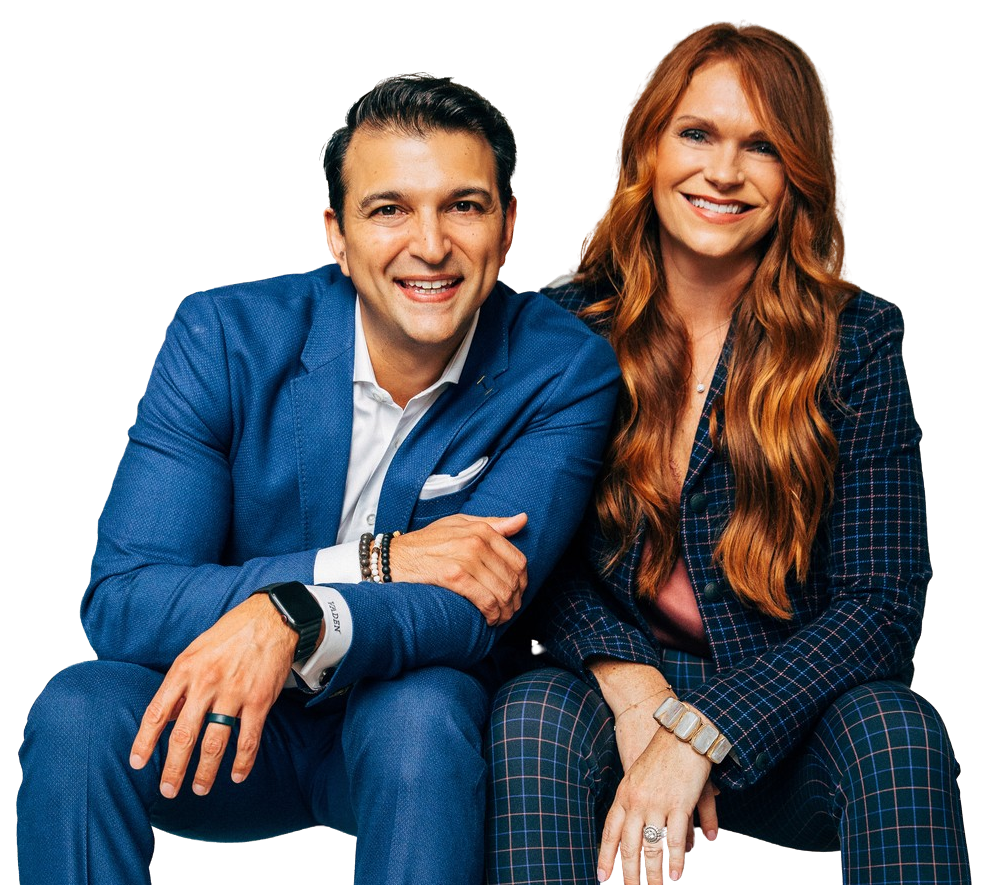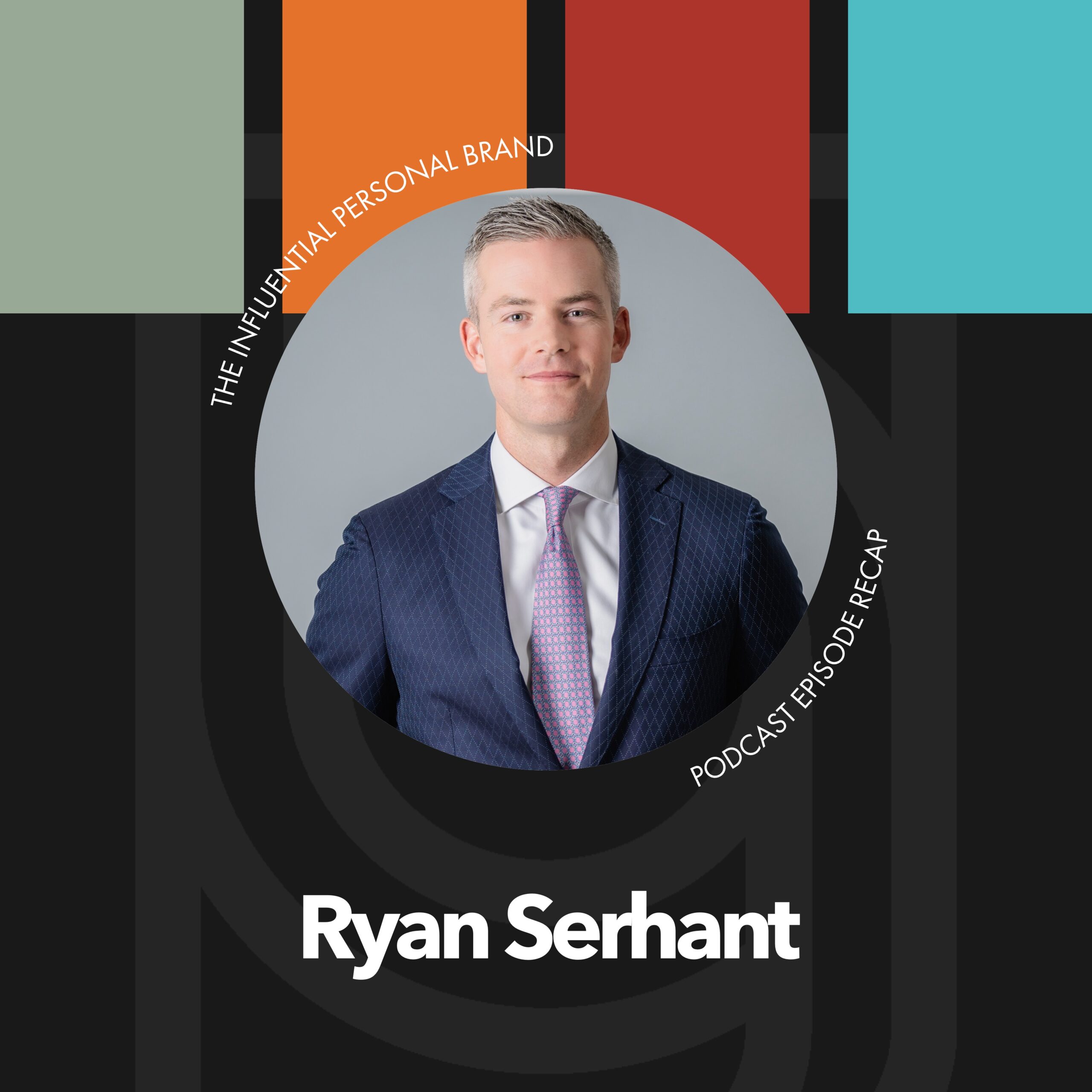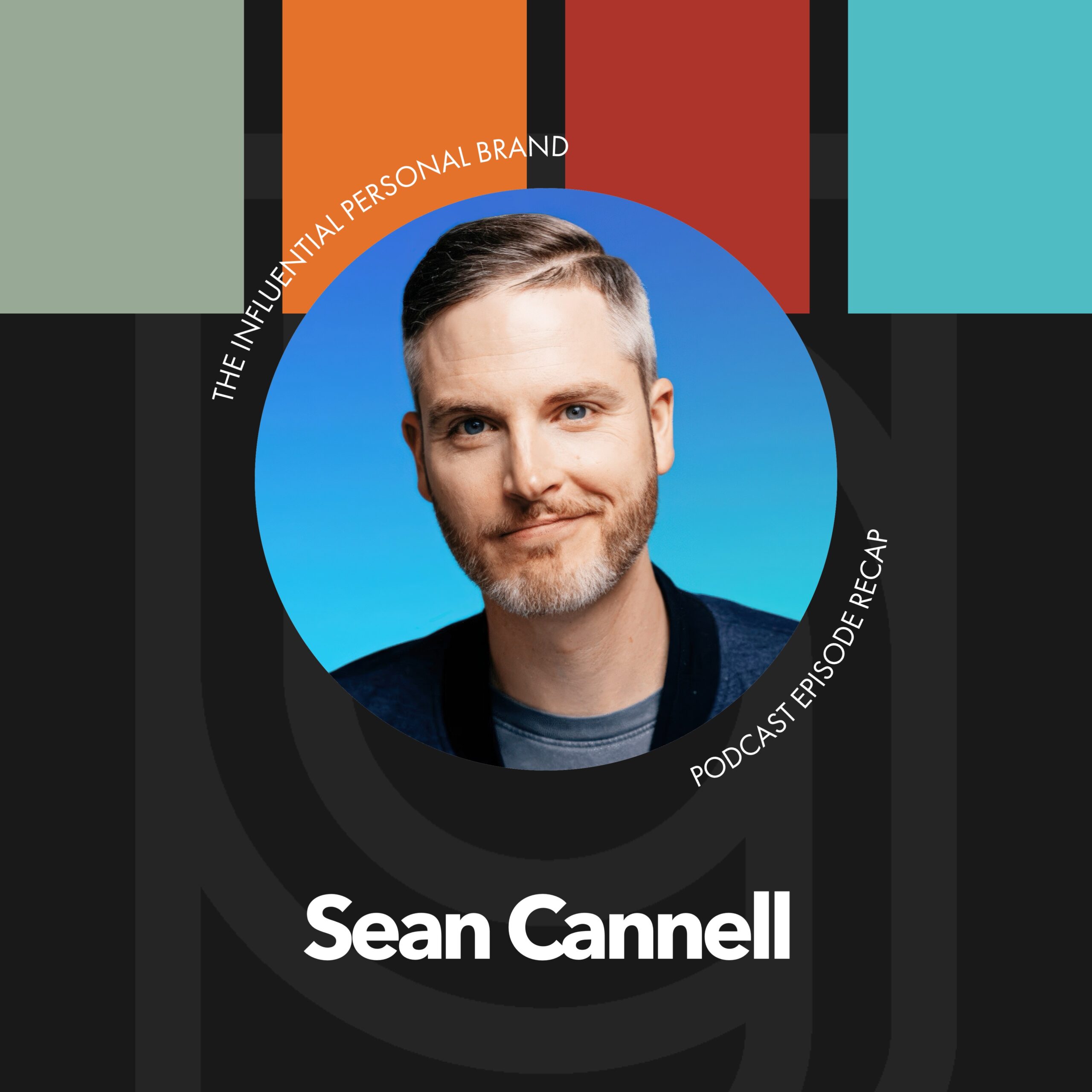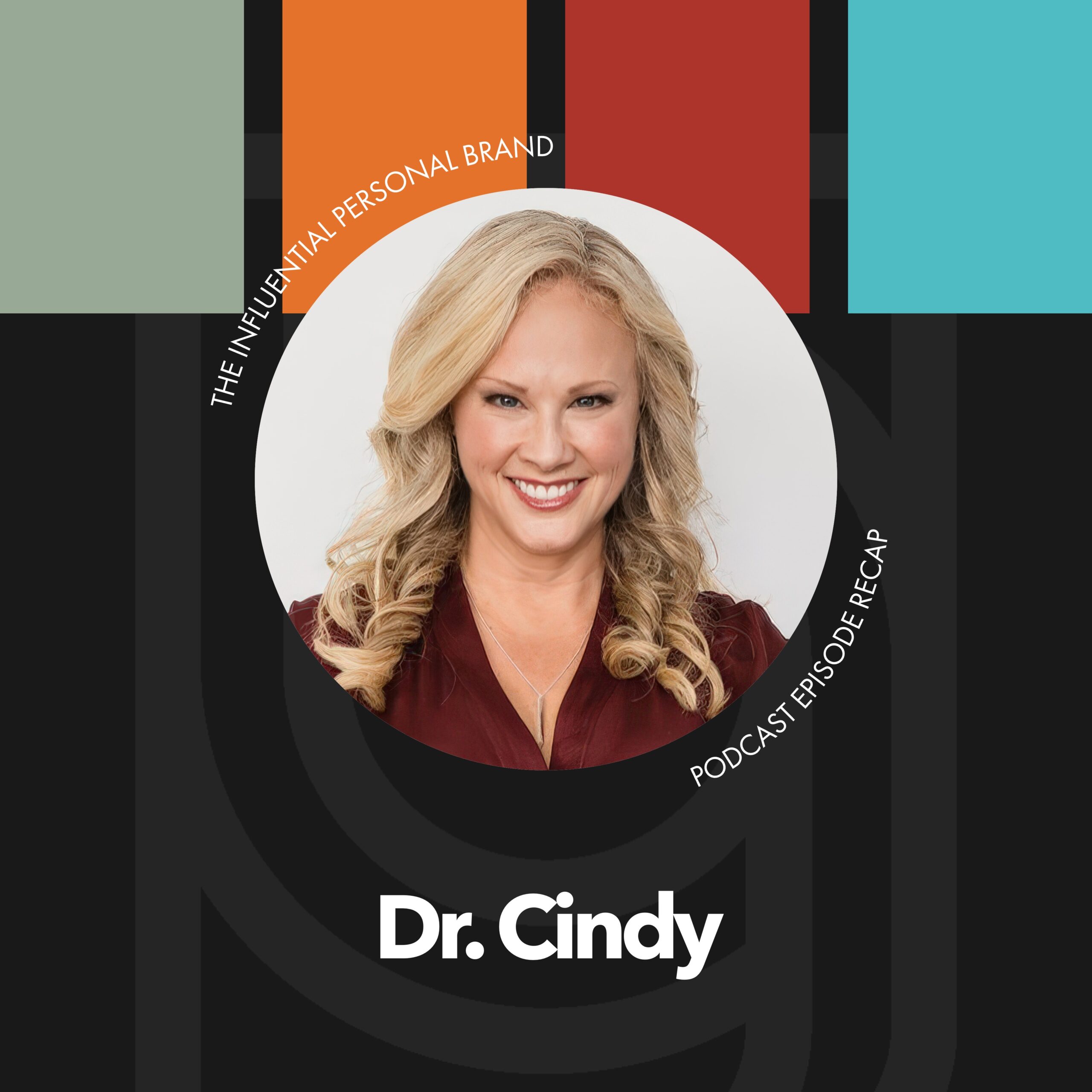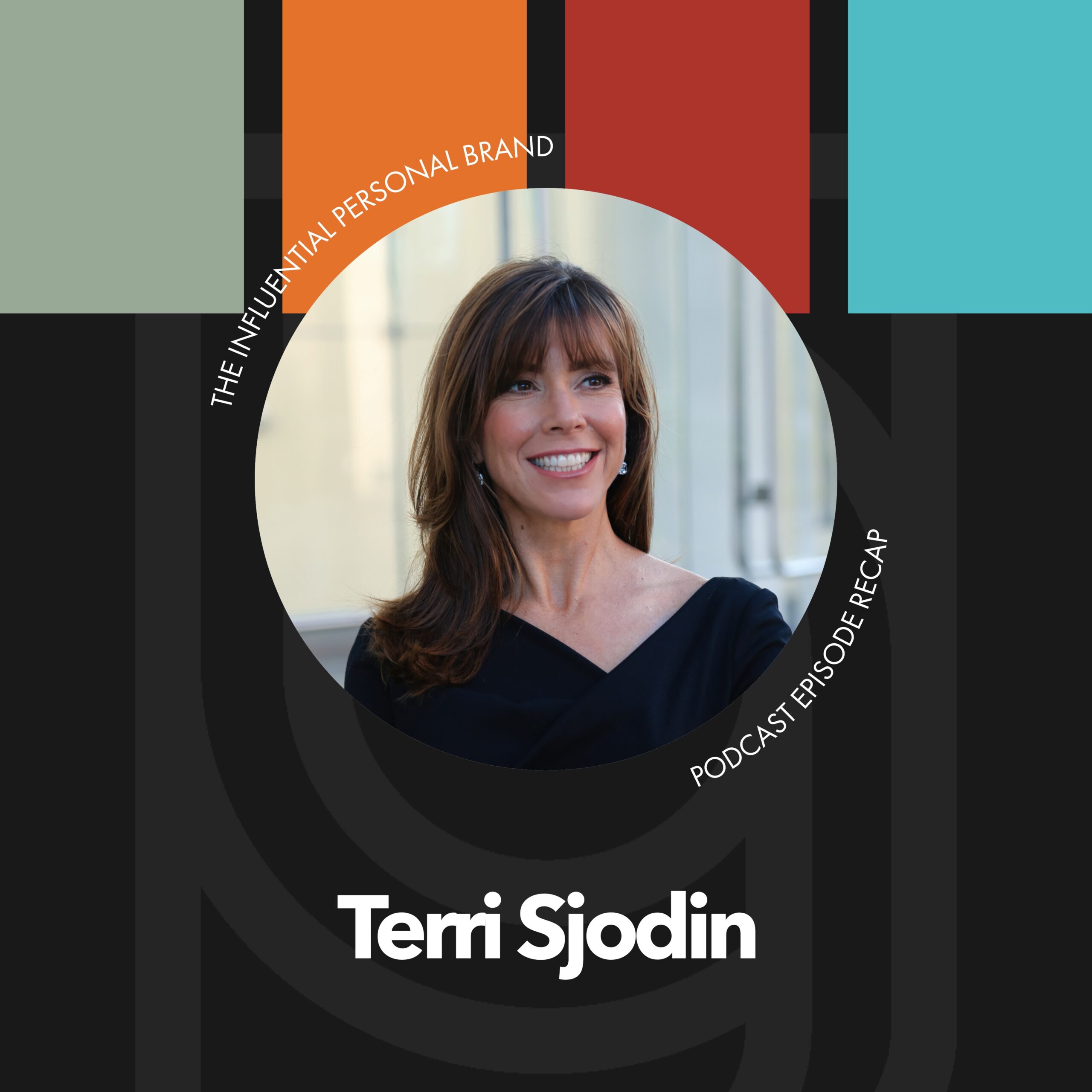RV (00:02):
How do you build massive recurring revenue? That is the theme of today’s show. And recap, this is sort of based off the interview that I did with John Meese talking about how to build massive membership sites, and we’re gonna talk about some of those highlights. But really, I wanna zero in on some of what our, what we believe our keys are to building massive recurring revenue and, and even just understanding what recurring revenue is and why does, why does recurring revenue even matter? And I wanna just kind of start with a little bit of a track record here. So you know, this is something that we know something about. Brand Builders is a recurring revenue model. I mean, our core business is a one-on-one coaching or, and training product that people pay a subscription for. And that’s our, our flagship program includes you know, coming to two days of training every month, and also one-on-one coaching every single month as well.
RV (01:04):
And then there’s a, there’s a, a, a, a do it yourself, like a self-study version of it, which is you get access to all the online training, and that’s a lower, a lower version. But we are a membership site, or not a membership site. We’re a recurring revenue business. And the business that we sold in 2018, a huge component of that business was also recurring revenue. So this is something we know a lot about and have a lot of experience in. And I first wanna talk to you about why would you even consider recurring revenue and, and, and, and what are some of the, some of the strengths and some of the reasons to have recurring revenue. One of the great things about recurring revenue, so this is some of the, you know, selling subscriptions, is because every month you don’t start on zero, right?
RV (01:48):
Like every month you’re not automatically on zero every month, you automatically come into the month with revenue contracted. Now, not always does a hundred percent of that come in, but you always have a, a, a, a large number, a large proportion of revenue contracted. And so that’s really, really valuable. And y you know, just in terms of taking the pressure off, because what recurring revenue does is it allows you to kind of predict for the future. It’s, it’s, it’s more predictable. And so because it’s more predictable, we can say, okay, well if, if we can grow our revenues, you know, we’re always factoring for churn. So some percentage of people are gonna leave, and hopefully we’re gonna seal that back door with retention, which we’ll talk about. But the the other thing that we will we’ll try to do is we’re always bringing people in the front door and, and then the snowball is growing.
RV (02:44):
And so it’s a snowball that gets bigger and bigger and bigger. So the revenue is steady, it’s consistent, and then you can plan for growth. You can say, gosh, you know, hiring this person would be a little scary right now, I don’t know that we could afford them, but assuming some basic metrics. And, you know, if we can look back and say, Hey, statistically our, our revenues grow at this rate, we can sort of forecast more predictably and more comfortably in the future to say, yeah, there’s probably some investments we could make, whether it’s technology or personnel or you know, equipment or whatever you know, software tools you need or services you need done to go, I think we, we can, we can swing it based on, you know, our growth trajectory. The other reason why recurring revenue is so valuable is it’s, it’s literally more valued in terms of business valuation.
RV (03:35):
So when you look at the financial valuations of a business, this is a super deep dive by the way that in our, one of our phase four courses is called eight Figure Entrepreneur. And we really teach the real mechanics of, of, you know, the, just the, the basic foundations of finance and acumen, cash flow and things like that that most entrepreneurs don’t get, not even in business school. You know, I have an M B A and I would say I, there was so much practical information I I never got. But when you look at how businesses are valued, businesses are valued based on an estimated stream of future cash flows. So in other words, they’re saying, what’s the likelihood, the way I describe it is pretend that you, here’s how you, here’s how you value a business. Think of it as a money machine.
RV (04:22):
And if, if I had a money machine that printed dollar bills and I said, Hey, I have a machine here that prints a $1 bill every year. How much is, how much would, would I sell this machine to you? And what would you be willing to buy this machine? And we go, well, we know it’s, it’s probably worth at least a dollar cuz it prints a dollar every year. And you know, if you don’t do anything to improve the machine, if it’s a reliable machine, there’s probably gonna be a dollar next year. So that would be $2, you know, in, in three years from now, it’s gonna be at least $3. Now the machine could break down. So that’s part of what as the buyer is assessing as what’s the likelihood that machine’s gonna break down or the strategic, A strategic buyer is somebody who says, Hmm, I know how to take $1 machines and I can turn them into machines that print a dollar every month.
RV (05:09):
I have some expertise or some skill or some people on my team who can take that machine and make it per print more, either $1 bills faster or can print dollar bills that are not a dollar, but $5 or $10 or $50. And so that’s what, how businesses are valued. It’s like, what’s the, what’s the reliability of the revenue coming in the future and saying, I’m willing to, when someone values a business and buys a business, they’re saying, I’m gonna, I’m gonna basically buy three years of your future cash flow now and assuming going, I’m gonna take the risk of going this machine. I’m buying from you. I’m going to, it’s gonna take me three years to earn my money back, but then after that, I’ll make more money. Or because I believe that I can pay, pay you three years worth of earnings for your machine now.
RV (05:59):
And I think I can, I can increase the productivity of that machine. And that’s effectively right there is how businesses are valued, which they really overcomplicate in a lot of, you know, academic institutions and schools and just people don’t understand it in general. Well, so then why is recurring revenue valuable? Because recurring revenue is predictable, and as predictability goes up, the valuation of the business goes up because the likelihood of those cash flows being there, every single month goes up when it’s already contracted versus when I have to go out and sell a whole new bunch of customers. So recurring revenue companies have higher values, they’re literally worth more because they’re more consistent and more the revenue’s more consistent and more predictable. You know, and if you look at SaaS companies, software companies, a lot of times those companies are valued based on a multiple of their revenue.
RV (06:51):
Whereas most companies are valued on a multiple of their profits. And so it becomes highly valuable when you have recurring revenue because it, it’s enticing to a potential buyer. So the demand for that money machine i e a business is, is higher. So those are some of the reasons to do recurring revenue. The, one of the other reasons why we love recurring revenue, and, and here’s a good way so in our, our phase one course one which is called finding your brand, d n a, one of the things we help people do is, is figure out what their primary business model should be. Your primary business model. Is that the revenue stream to which all others are subservient to that one. And we talk about when you should choose a course versus when you should choose a membership site. And there’s all these factors.
RV (07:39):
Well, one of the factors is to say, if you are good at constantly finding new customers and you’re good at it and you, you, your talents lend themselves to it and you want to do it, you go, a course is a really good option because once the course is built, you don’t have to change much. You can focus your time on just finding new people to buy the existing thing. But if you struggle with marketing and sales and you go, man, I struggle to find new customers, I’m not as, as talented at as that, then we go, well, sometimes membership sites are better because what you can do is you can spend less time acquiring new customers and spend more time creating content to service your existing customers. And so that’s kind of what we do. I mean, we like to think we’re good at both marketing and sales especially is like kind of our expertise.
RV (08:30):
And, but, but we don’t love having to sell every single month just to like hit the budget, right? So we love having the recurring revenue and going, you know, at least for me, I think one of my superpowers is creating content. So it’s easier for me, even though I love marketing and sales, and we’re good at marketing and sales, and that’s what we teach people how to do. I, I, my superpower I think is even more so in creating content. So it’s easier for me to go, yeah, let me, let me find a few customers who will be in a continuity with us and let’s serve them in a deeper way. Now, at Brand Builders Group, we currently have over 600 active clients that are in our, our our monthly training, you know, and coaching program which are our flagship programs. And there’s like a self, you know, there’s a do-it-yourself version, and then there’s a one-on-one version, which also includes our live training events.
RV (09:25):
And then we have, we have like 300 private clients on top of that who just hire us for private projects and private, you know topics at at at less consistent. Those are more like, those are more like sales. They’re not recurring revenue, they’re bigger hits of revenue. When someone just says, ah, I really wanna like, focus on my podcast, just hire us to help you with that. Or writing their book or launching their book or their keynote or building out their funnels or, and it’s more of just they’re hiring us for, in a more expedient way to focus on a burst. But those are ones like, you have to be selling new ones every month versus the recurring revenues going, Hey, when you’re on a recurring membership, we give you all of those things, we give you access to all of ’em, and we’ll step you through ’em as you need to.
RV (10:06):
So that’s a little bit about why recurring revenue matters and understanding how it affects business valuation. Again, if, if you look at the difference between a company valued on revenue versus a company valued on profit most companies are valued on, on, on profit or ebitda earnings before interest, taxes, depreciation, and amortization, which basically just means profit, which is, you know, to use my money machine analogy which by the way is an analogy I came up with of, of just thinking about a business just as a simple m money printing machine to go, okay, a dollar, if my money, my money machine prints a dollar every year, that’s the profit of, that’s the final output. But and most companies, you know, depending on a whole number of factors, but let’s say you were getting a just a five multiple meanings, if someone were to pay you a five multiple, that means a buyer’s gonna basically come in and say, I’m gonna pay you five years worth of profits, five years worth of future profits today to buy your money machine.
RV (11:08):
So I’m gonna, if, if you have a dollar in profit, I’m gonna pay you $5. I’m a multiple of five, I’m gonna give you $5 today knowing or feeling confidently, like I will at least get my $5 back over the next five years and hopefully faster if I can do some things to improve the efficiency of the operation or if I have other strategic reasons to make that acquisition. That’s how most business deals are done. It’s a multiple of profits or multiple of ebitda, but recurring revenue, like SaaS companies often are valued on revenue. So if, if you get a, a value of let’s say you get a, a multiple of five, but instead of on your profits, it’s a, it is on your revenue. So, for example, to use this same example, a company that produces a dollar in profit every year, let’s say their revenue is $10, so that would be a company operating at a 10% profit margin.
RV (12:03):
So they generate $10 in revenue, they gotta pay all their expenses, their salespeople, their marketing, their overhead, you know, the product acquisition, their taxes, their insurance, their, you know, everything. And then at the end of the day, maybe they have a 10% profit. Like, and you go, okay, I generated $10 in revenue, a dollar in profit. Normally it’s a a five multiple would say, oh I’m getting, I’m gonna get $5 for that business, five times, $1. But when you’re valued on revenue, it’s a game changer to go, I’m, if I got a, if I got a a, a multiple of five on revenue, it’s not five times $1, it’s five times $10. So that company is to buy that company is not $5, but $50, five times 10, the multiple of five times the revenue of $10. So that’s five years worth of revenues.
RV (12:55):
I’m valuing, valuing that company based on revenues that that company is worth $50 instead of $5 because it’s five years of future revenues versus five years of future profits, right? One of the dynamics that makes companies more have a higher enterprise value is, oh, and be more likely to be valued on revenue, is the consistency of the revenue, which is, you know, happens with recurring revenue. So that’s probably more than most of you wanted to know, but I, I mean, I literally went through MBA school and never understood that basic core concept. It wasn’t until years later as an entrepreneur that I, I, I had a mentor finally explained it to me, sort of in, in simpler English. And it’s important to understand that. And, and that is, even if you plan on never selling your business, I mean, this is again, another principle.
RV (13:45):
We teach an eight figure entrepreneur, is that a business worth selling? Looks a whole lot like a business worth keeping. You know, a business worth selling is a business that operates without you with consistency and produces loss of cash flow inevitably into the future. Well, a business that does that looks a lot like a business worth keeping. I mean, if you have a money machine that prints money every year and it doesn’t require a lot of your time, and there’s not a lot of risk in, in those, that money machine breaking down, you go, why didn’t I just keep it? So the money machine’s just printing money and I’m just keeping the money every year. That’s the way to think about it. Recurring revenue increases consistency, thereby reduces volatility or reduces risk, thereby increasing the valuation of that business, whether you sell it or you keep it.
RV (14:25):
So high level, that’s why recurring revenue is such a good idea. Now, how do you create great recurring revenue? Couple of the key things, if you’re wanting to create recurring revenue of your business, and John talked about this a little bit in the, in the interview, but if you really wanna create a quality recurring revenue product, the question that I would pose for you to answer is this, what is the problem that I can solve that never goes away? What is a problem that I can solve that never goes away? In other words, the need for it continues on month after month after month, which causes people to want to continue paying for us. Accountability is one of the, one of the core problems that we solve. Now, technically the problem we solve is obscurity. We help people who are struggling to be more well known to, to do that.
RV (15:24):
And we teach them a set of information and strategies for how to do that. And all the tactics that we have now used to launch, you know, we’ve had 12 clients that have become New York Times or Wall Street Journal bestsellers. We’ve had four clients create TED Talks that have gone viral with over a million views. We’ve had over we, we just had our, our fifth client generate more than seven figures growth in their annual revenue. So they’ve grown their revenue more than a million dollars a year since being a client of ours. So we have a set of knowledge that we teach people to do that. But what the need, the, the, the problems that never go away are accountability, community and access to great vendors and as well as inspiration, right? You, the inspiration is like never, it’s a, it’s something that never disappears.
RV (16:13):
So those are the, some of the problems we’re solving. So you gotta sort of think about it if you’re gonna create a membership site or if you have one and you’re going, how do I, how do I get the snowball rolling faster? Be thinking about what are the problems that my clients have that never go away? And how can I serve those needs better? All right? So that’s my first key for how to grow your recurring revenue. The second, the second key, and this one is directly from the, from the the mind of AJ Vaden. So AJ talks about this all the time with our team internally, is when you’re growing recurring revenue, it’s sort of a two-part game. You need new people coming in the front door. But the big thing that everybody misses, which is really the, like, the more critical one I think is you have to seal the back door.
RV (17:05):
You have to like, you have to be so sticky that people aren’t leaving. Otherwise, you literally have a treadmill or this revolving door where you got people coming in as fast as they’re going out, or if they’re leaving faster, then you’re bringing ’em in, then you’re going backwards, right? And that’s negative churn. So y you, the, the, the first real job is to go, man, even before we perfect bringing in new customers, it’s going, how do we close that back door? In other words, how do we keep people from canceling? And when I say key people from canceling, I don’t mean like locking them in to, to, to, to being forced to stay to something that they hate. It’s not like going, Hey, you gotta have, you know, these contract terms that are just relentless. And it’s not that, here’s the key, the key is retention or, or excuse me, here’s the, here is the key to growing your membership site.
RV (18:00):
Utilization equals retention. Utilization equals retention. This is what AJ is saying all the time. Utilization equals retention. Meaning the way to serve your current customers is you have to make sure they’re using whatever the thing is that you’ve given them. And this is a distinct mindset shift. A lot of people think that sales is done once the sale is made. And when you have that mindset of like, oh, I closed the sale, I’m onto the next, I’m onto the next, that doesn’t work. We don’t think that works, period. You know, in one of our phase three courses, it’s called pressure-free persuasion. We, we talk about how the sale is not done when the sale is made. The sale is finished. When the client experiences the result that you promised the sale isn’t made, or the sale, the sale isn’t finished. When the sale is made, the sale is finished.
RV (18:55):
When the client experiences the result that you know, you promised or that you were both working towards you probably didn’t promise it. I would recommend you don’t promise results. Just like you can’t, we cannot guarantee results even though we’ve had amazing results. And that’s why our client list continues to be amazing, right? I mean, we’re working with Ed Millet and Louis Howes and Amy Porterfield and, and you know, Eric Thomas et the hip hop preacher and Peter Diamandis and all these amazing people that are, are now clients of ours, cuz we are really getting amazing results. But utilization equals retention. So the sale that you have to make every month is not so much to a new customer like you might with more of a commoditized model, like a course offering, let’s say the sale you gotta make is to your current customers to use the thing they have.
RV (19:45):
So you always have to be selling, right? You still have to be selling, you gotta be selling them on making sure they’re using what you’ve given them. Utilization equals retention. If your people are using your program, if they’re using your service, if they’re using, if they’re accessing your portal, if they’re utilizing your tools, they’re gonna stay. If they’re not using your tools, they gonna leave, right? They’re not going to pay for something they’re not using. Even if what you’re providing is amazing world class best in class, even if your solution is the best there is, if your clients aren’t using it, they are bowing out, they’re gonna be leaving, right? So I’m not so focused, like if I were gonna buy a recurring, if as a, as a, as a business acquirer, if I were gonna go buy a company who had recurring revenue, I would be looking at their u the utilization.
RV (20:40):
Are people using the thing they’re paying for? If they’re using it, even if the product is crappy, I go, it’s, that’s great. I can make the product better. That’s not that hard. But if people aren’t using it, then I go, you just got a bunch of people paying for something here that are, you know, it’s a parking lot that no one is using and going, that’s not gonna long term, that’s not gonna work. We gotta get people using the thing. So utilization equals retention. And there’s a couple key things here for how to increase your utilization. So first of all, you gotta have a journey. You need to have a map, you need to have a visual that outlines what the process looks like. For those of you that are listening that are members in captivating content, which is our phase one course two program, that’s what we help you do.
RV (21:26):
We help you extrapolate your unique expertise and experience into a proprietary methodology, a body of work, a visual journey of, of illustrations and frameworks and flow charts and, and, and chart and tables that that show. This is the process. If you’re a member of ours, you know, we have the brand builder journey. It’s our four phase process that we walk you through from going you’re completely obs obscure and unknown to world famous and world recognized eight figure entrepreneur, best-selling author, hall of fame speaker you know, all the things that we have done and helped people do. We’ve got a four phase, a simple four-phase process that we push people through. And it works. Part of the reason why people stay is cuz they can see the whole journey. You gotta show them this, it’s this step and this step and this step. Don’t just assume that they’re gonna hang around blindly not knowing what, what it takes to actually get to where they’re trying to go.
RV (22:23):
So you wanna show that, talk about it, keep that in front of them so that they’re seeing like, oh, okay, you know, yes, it’s hard right now, but this is just a step and I’m gonna go to the next step and the next step and the next step, and that’s how I’m gonna ultimately get to where I want to go. So you gotta have a journey. The other thing is you gotta have data. You gotta have red flags going on, firing off in, in your, in your business. Meaning if somebody’s not using your stuff, you need to have dashboards and tools or reports or people who are monitoring that, who send up an alert to say, Hey, this is, and at, at at Brand Builders Group, I’ll just tell you transparently, we have something called an at-risk report where we’re looking at all of the people who haven’t been doing a certain number of activities.
RV (23:11):
So in our case, they haven’t logged into a portal in a certain number of days. They haven’t been to a course been to one of our live events in a certain number of days. They haven’t showed up for one on their one-on-one calls in a certain number of days. They haven’t, you know, been inside of our, our Facebook community, our private Facebook community in a certain number of days. And so we’re, because part of what we’re providing, part of what they’re paying for is frankly is accountability and inspiration. And this is how we track that, is go like, Hey, you’re not showing up, like you’re not doing the work. Like if you’re not coming, you’re not doing the work, which means you’re not getting the results, which means even though it’s not our fault that you’re not getting the result, the fact of the matter is you’re not getting the result, which means, means you’re not gonna keep paying.
RV (23:46):
So even if everything we do is perfect, if they’re not using it, it doesn’t matter, they’re gonna cancel. So we have to set up triggers and, you know, red flags and this at-risk report of all of these things. And we’re using automation tools to do this. And we’re using some of its manual reporting, some of it is customer surveys, some of it is manual outreach and check-ins, like to constantly go make sure people are using this. And, and here’s here’s another question that I would encourage you, you know, to, to ponder as it relate as it relates to this. Ask yourself this question, how can I serve my current audience in a deeper way? How can I serve my current audience in a deeper way? Because utilization equals retention. And if I’m serving them in a deeper way, then I’m, I’m speaking more powerfully to their immediate needs.
RV (24:40):
I’m providing the tools, the templates, the checklist for them to do it. Here’s a recent example for us. A lot of speakers struggle with how much should I charge? This has been, you know, gone on for decades, like what’s the right price to charge? And people throw out all these weird numbers. We created this, this speaker fee calculator. It’s, and it’s a simple set of questions you answer and it spits out not only what your speaking fee should be, but what your virtual fee should be and your half day fee and your two day fee and your international fee and your interview fee and all of it, it all spits out and it takes you like two and a half minutes to fill in this, this thing that is now a tool that solves a problem. We then also have a, a a a toolkit that is our speaker press kit and we go, you know, your speaker press Prescott needs to have a fee schedule.
RV (25:28):
Well, we just solved that problem, but then what about the rest of your speaker Prescott? What are all the things that need to be in there and how should it be structured and how should it be laid out? And we go, great. One of our incentives for people when they sign up I I think it’s, if I think if they sign up and pay for a year in advance, is we give them the template that we actually use for our own speaker press kits. And then you can like, model off of it and you can just build it, boom, up and running. So everything that we’ve been doing at Brand Builders Group for the last few years has been basically creating the education and all the educational resources. Now we’re moving much more aggressively and a assertively into how do we give people tools and templates and checklists to help them execute and implement what they’re learning faster.
RV (26:10):
And internally, our team is going, how are we monitoring utilization? Because utilization equals retention. Utilization equals retention. So that’s the second thing you really gotta do. Now the third thing is you gotta keep people coming in the front door. You gotta keep people always coming in the front door. And it’s just, you know, sales, sales solves all problems, right? Like if, if we, if we can figure out how to constantly generate new sales, then we’re gonna always have cash flow coming in that we can use to solve other problems or to hire people who can solve problems. The question is, do you have a consistent engine for driving new leads and new customers into your business?
RV (27:00):
Think about that. Just just think about that question to yourself for a second. Are you confident that you have an engine that consistently produces new leads and new customers for your business every month, every week, every day? Do you know exactly this is, this is how my machine works, we do this and then this happens, and then this happens, and then this happens and that brings somebody who finds us here and then they do this, and then they do this, and then they become a customer and then they stay because they’re utilizing the program. And you, if you aren’t confident on that, like if you aren’t crystal clear on what is your process, what is your system, what is your method for perpetually continually, constantly never ending, always driving new leads and new customers into your business? If you’re not clear on that, go to free brand call.com slash podcast right now, free brand call.com/podcast because you need to talk to our team because this is one of the things that we specialize the most in, is helping you create a, a set of mechanisms and systems and processes in your business to keep people coming in the front door.
RV (28:13):
They’ve gotta be coming in the front door because they’re always gonna leave out the back no matter how good your program is. And no matter how much you focus on retention, which, you know, as I just said, utilization equals retention. So we wanna close that back door, but even if your program is the best in the world, people are always going to leave. So you just gotta make sure you’re bringing in new customers faster than the older one, than the old ones are leaving by. And so you’re adding value to them and you’re also constantly refining and perfecting your new customer acquisition strategy. If you don’t feel confident or you’re not clear on how you get new customers and new leads on a regular consistent basis, you need to talk to us. I mean, I’m, I’m serious. Just go to free ran call.com/podcast, fill out the form and talk, talk to someone on our team because this is what we specialize in and this is why we’re doing it, right?
RV (29:07):
And I, you know, i i I don’t know how to say this without sounding like a total jerk, but like we, we just launched another seven figure business inside a brand builders group in like the last year. So we, we now have five different seven figure, multi seven figures businesses that we’ve built and two eight figure businesses. And it’s by following the same principles. All of these principles are are very straightforward, they’re not easy, but they are simple and they do work if you follow the system. So that’s why we’re here. We’d love to talk to you. If you’re not ready for that, hey, share this episode with somebody who needs to hear it. Obviously anything you can do to, to leave reviews helps us tremendously, but also helps new listeners so you know, rate and review and help us that way. And no matter what, keep coming back every week so that we can be keep pouring into you and giving you as much as we can Right here for free on the Influential Personal Brand podcast. That’s all we got today for how to build massive recurring revenue. We’ll catch you next time. We love ya. Bye-Bye.

